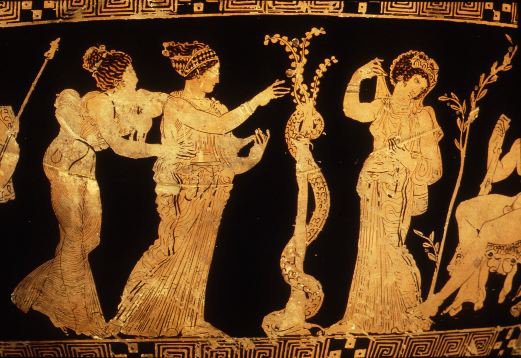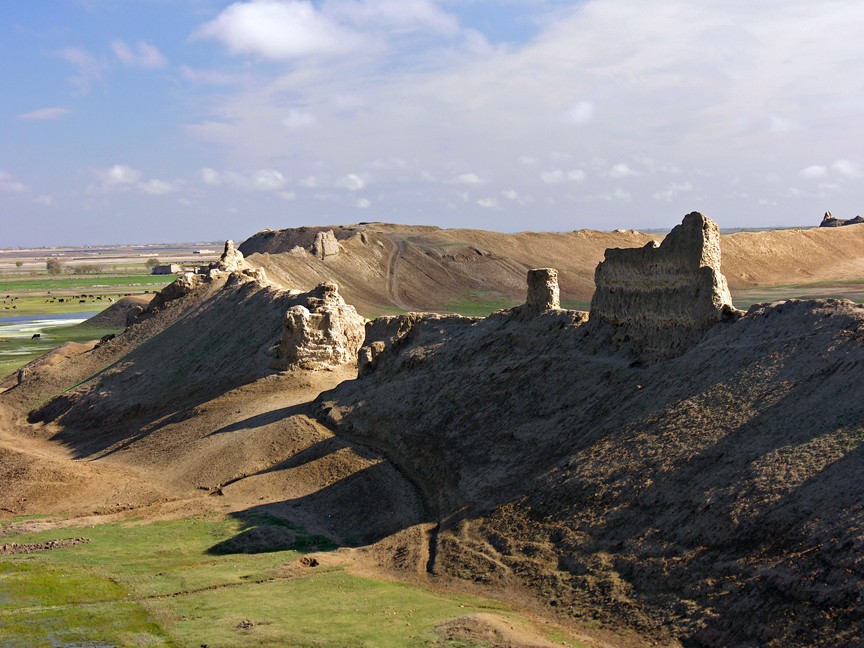Μηδίζω! THE WORLD OF ACHAEMENID HELLAS
CHAPTER 5: SPOROS or CIHYA
PERSEPOLIS ARCHIVAL TABLET (c.430 BCE)
50 bar of rice set aside for seed. At Liduma. 4th Year.
ANCIENT AGRICULTURE BY C. PERICLES TANTINU (1384 CE)
RICE
In the time of King Mithradates a royal assessment of Hellas’ agriculture was conducted; as the Amavadatids were principally confined to the bounds and resources contained within Hellas, they wanted to maximise their utility. Within this assessment is contained the first clear reference to the growing of rice in Hellas, though the report suggests that the cultivation of rice had been going on for some time. Its introduction to Hellas is by lai-source associated with King Vivana, which would account for the industry’s already-mature status as of the time of King Mithradates. The report locates the entirety of Hellas’ rice production within Makedon, and in particular the lowlands immediately around the Gulf of Therma. Aloros, Berroia, Ikhnai, Mieza, Sindos, and Therma are all named as rice producing poleis. In total the report estimates that rice fields took up 210,500 plethron in space, and produced 360,000 artaba of rice each year. Despite the Amavadatids being known as the Garden Kings in our time it is clear they had not entirely adapted to rice cultivation in Hellas, given the low tunnage-per-akra this would indicate. As for the matter of Makedon, it is not coincidental that this land begins to appear more frequently in the writings of Hellenes at this time; the production of rice required substantial agricultural infrastructure, pushing Makedon’s residents towards cities and settled industry, increasing the wealth and potency of Hellas’ ancient twin along with reducing the Hellenic notion of Makedon being a land of barbarians.
EXTRACT FROM MELANAS' PERSIKA (144 BCE)
APPROACH TO AMIDA
It was then that Melanas first saw it, the Shaded Road. As the Royal Road descended to the flat lands of Inner Asia, he saw banyans from afar all along the Road’s progress, like a forest that only grew on pavement, interrupted only by cities along the Road’s route, and only if the Road passed through the city in question. It seemingly stretched for the entirety of the Royal Road as it passed through Kordyene into Assyria, and beyond. Nothing like it had even been attempted anywhere else in the world. As he grew closer, Melanas saw how this marvellous achievement had been wrought; artificial platforms, of a kind similar to columns, had been erected alongside the road, and the banyans induced to grow from these vantage points, spreading over centuries to create the Shaded Road. The shelter from the heat of midday was extremely welcome. He progressed to the farsang of Zukni, the last before the city of Amide, where he was welcomed at the rest station. His hosts could not agree as to who had first planted the Banyans- some said Dareios, the Akhaimenid, had created the Shaded Road, others said that it was Agnimitre the Conqueror, and others still said that it was the work of King Admirani, father of the current Great King Gela. Regardless of their disagreements, all of those stationed at Zukni were deeply proud and reverential towards the Shaded Road, and showed Melanas a shrine that they kept for the Ilanim, the daimones of the Shaded Road. Melanas spoke to them of the dryades and they approved most heartily. They provisioned him with generous quantities of kande, and it was with a glad heart that Melanas took to the Road again, this time destined to enter the city of Amide.
THE MAKETHONIKA (c.980 CE)
NIKOTHARMA DECLARES WAR
King Nikotharma sailed to Krete, whereupon he meditated underneath the Banyan for ten days and ten nights, eating only rice bread and drinking only water. Through his piety and wisdom he received knowledge of what should be done, and sailed back to Makethonia immediately, avoiding all Hellenic attempts to capture his vessel. He found his people eager for his judgement, and so he gave it to them in the city of Nirvane, the capital of the realm.
“A terrible ignorance and malignancy has come over the Hellenarkh, all sense of justice has fled, all proper forethought deserted him, and a false notion of piety instead inflames egregious and warmongering against Makedon, and against those of us who understand the wisdom of the Bodda’s teachings. It is our task, our duty to preserve peace, to promote the lifting of ignorance, and this cannot be accomplished if we do not defend ourselves against this unprovoked, aggressive action aimed at ending the teachings of the Bodda in Hellas, perhaps even the end of Makethon itself. We must defend ourselves against those that we have loyally served, lest far greater harm come over the Hellenes by our inaction. We must test our faith in battle against the Hellenarkh, people of Makedon.”
And King Nikotharma assembled twenty thousand cavalry, and sixty thousand infantry, and went to war against the Hellenarkh.
EXTRACT FROM ALARIC LARSUN’S GERMANIKA (1690 CE)
THE GOTI OF THE EAST
The Eastern Goti, having passed through harsh mountains and deserts beyond count, now found themselves in lands beyond compare. Rich soils, vast green forests, luscious fruits (many of which the Goti had never encountered before), and that was only the natural wealth of the landscape. They found themselves in a country of ancient cities, its treasures bloated from tax revenue. From the descriptions of the lands we should conclude that the Goti were now in the lands of Gandara. Foremost, we have the mention of the Baktrigs, who I am confident in identifying as Baktrians. Second, we have the mention of the city of Oabarg, which would seem to be ancient Baktres, described as it is as being an oasis city with high circuit walls, surrounded by rich farmland and an additional outer wall protecting against the desert, this description matching not only that of ancient Baktres but the modern city that has overgrown it. Thirdly, the saga of the Goti mentions the amre fruit growing in these lands, and Gandara is the northernmost that amre will grow without extensive intervention, though the amre was illustrated in the art of many surrounding civilizations..
The Eastern Goti found themselves arriving in Gandara at an extremely opportune time. Baguma Ric, as the the Goti called him, was the King of Gandara that time, and things were still recovering from the collapse of Imerian authority over the region. The Tokharian basin had been lost. Numerous military settlers in the basin and nearby had been driven off, or had rebelled, or had simply departed the area. Despite the saga’s repeated compliments towards the Baktrigisk cavalry, who by all accounts were renowned across Asia for their skill, it was clear that Gandara was facing a dangerous time. It had been the movement of the Hon which had pushed the Skythians to invade Inner Asia, and the Sarmatians into Juropa, and now the Hon were on the threshold of invading Gandara. The arrival of several thousand warriors, foreign and uncivilized though they must have seemed, was an extremely welcome development. The Goti thought they rather got the better of the resulting deal, where they were given farmsteads, and in turn served the King of Gandara, given that war was something that came naturally to them. However, I rather think that Baguma Ric would have thought that he had gotten the better part of the deal- an opportunity to demonstrate his ability to control the situation, by turning a possible set of raiders into valuable soldiers, along with shoring up his military assets, in return for the thing that he had no shortage of- fertile land in need of population.
The saga is principally concerned, from here until its end, with the various adventures of the Goti under the command of Baguma Ric, and the intricate politics of the Goti as they settled in Gandara. But the surviving portions of the saga only narrate the next generation’s worth of history of the Eastern Goti before the record then breaks. To further track the history of the Eastern Goti we must now turn back to Uropa, and in particular to Sindunbarg, and wait some forty years. Contact between West and East was re-established sometime in the reign of Basileus Wilhilm I, who we have met earlier. We begin to find references in the burgeoning literature of Gothika to a land inhabited by Goti called Amraland. These not only suggest that the Eastern Goti had continued to survive, but were now actively seeking contact with their homeland, having not exactly left much indication of their eventual whereabouts in their anabasis across Skythia and northern Asia. We also see in these references the first indication of the role the Eastern Goti now had, that of escorting caravans on the Silk Road. This is confirmed by the corroborating reports of other nations on the Silk Road, in the following decades. Thus the Eastern Goti, in the end, also joined in the settled affairs of Asia, much as their western brethren had, but at opposite sides of the world, and with vastly different aims. The Western Goti, we saw, strove to create an ambitious and expansionist Empire the equal of the now-collapsed Hellenic Koinon, whereas the Eastern Goti made themselves indispensable to the ever-strengthening links between Uropa, Asia, and Han. We await with great anticipation the identification of their sites of settlement, for through Eastern Goti eyes we would be witnesses to one of the most intense periods of human history ever recorded.
EXTRACT FROM CULINARY ARTS BY ANSHAR-APLA (98 BCE)
A FEAST OF KING GELA
The following was sent before King Gela and his guests: ice-chilled wine from Carthage, Parsa; spiced wine from Sur, Armina; raisin wine from Sidon; saffron and honey cordial; fried trevally with dried lime; fried angelfish with black peppercorn batter; roasted bream with rose, cumin, black peppercorns; roasted goose with honey-roasted carrot; roasted chicken with yoghurt and cumin; turned pork with sour cherry; roasted ox stuffed with nuts, capers, and whole limes; roasted beef with mango; boiled pork with apple; roasted pork with milk; roasted ox; roasted chicken with Indian spice; fried beef with cinnamon; turned pork with star anise; turned duck with black peppercorns and roasted figs; lamb and cucumber pie with cinnamon; fried cabbage with pomegranate; rice with saffron and turmeric; rice with ghee; cucumber and mint yoghurt; sesame and garlic dip; baked cucumbers with onion, ghee, and black peppercorns; salted lentil porridge; barley soup; aromatic rice; syrup soaked lentil sweets; cake in ghee with almond paste; cinnamon cake with honey and apricot; pistachio cake with cardamom; sour cherry cake; rose pie; candied lime; candied capers; candied figs; roast figs with honey and sweet cream; confection marvels (including a replica of the palace of Amida in edible candy); honey candies; fruits of all nations.




